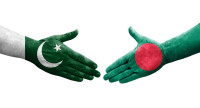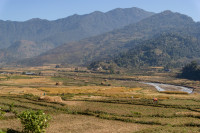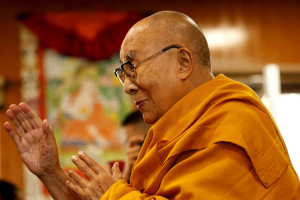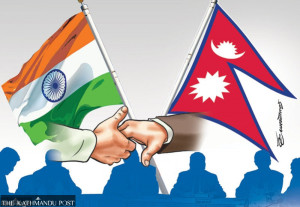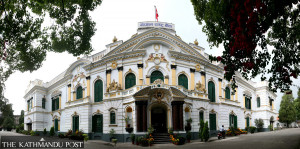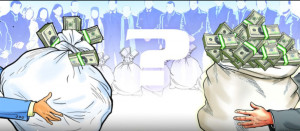Columns
Return of the repressed
The voices repressed by the dominant parties are now coming back with a vengeance.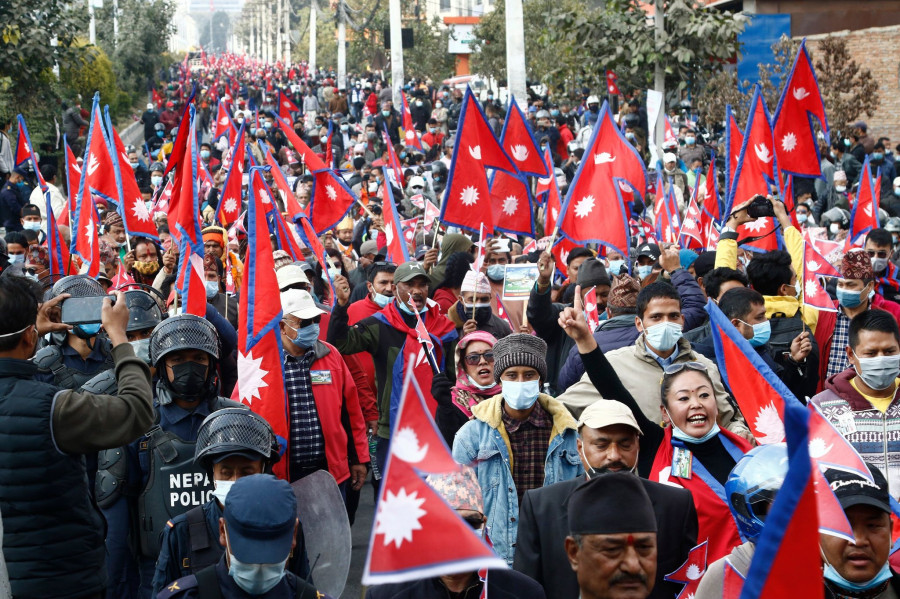
Ajaya Bhadra Khanal
In the face of diverse triggers, people are venting discontent in multiple ways. What is interesting about these forms of expression is that they are intricately tied to the return of the repressed.
As a solution to the Maoist conflict and waves of identity-based political movements, Nepal abolished the monarchy, promoted social inclusion, introduced proportional representation, established a federal structure and adopted secularism. These solutions, once seen as political settlements between different political forces, are now being portrayed as agendas forced by the West.
Now, with the domination of mainstream political parties, primarily the Nepali Congress and the Communist Party of Nepal-UML, the voices that have been repressed are now coming back with a vengeance. And they have found a new ally, widespread public ire.
Despite convoluted arguments to the contrary, it has now become necessary, and urgent, to accept the fact that public discontent is growing. According to a recent survey, 68 percent of the people do not think the country is moving in the right direction, despite their economic condition improving in the last five years.
If you don’t believe the survey’s findings, look at what is happening around you. Look at how different incidents have triggered people’s emotions.
Let’s first look at the discourse that Nepal, as a country, is failing and is currently facing an existential threat. This narrative is being propagated mostly by conservatives and rightists, who argue that endemic corruption, weak nationalism and erosion of culture are the three most serious problems. On the eve of Democracy Day, former King Gyanendra gave a speech, where he portrayed a dire situation and implied that Nepal needed to be saved. Obviously, he indicated that the monarchy needs to return.
Former King Gyanendra often issues statements, but this time, something was different—not in what he said, but in the broader context, especially how the mainstream parties and leaders perceived a direct threat. On the one hand, the mainstream parties are gradually losing trust, and on the other, news about corruption and impunity is gaining ground. News that Nepal will be placed under the grey list by the Financial Action Task Force (FATF) will further strengthen this discourse.
Along with national activists, international experts now believe that Nepal has done little to prosecute corruption, curb money laundering and ensure financial discipline. One eminent Nepali expert went to the extent of commenting privately that all of Nepal’s financial institutions have now been captured by the UML, Prime Minister KP Sharma Oli’s party. He gave the examples of the Office of the Prime Minister, the Finance Ministry, the National Planning Commission, the Nepal Rastra Bank, the Securities Board of Nepal (SEBON), the stock exchange (NEPSE), the Nepal Insurance Authority and the Investment Board of Nepal (IBN).
Another major incident took place at Odisha’s Kalinga Institute of Industrial Technology (KIIT) University, where a Nepali student committed suicide after abuse by a fellow student. The Odisha incident gave rise to nationalistic fervour. The outrage was fueled by a sense of sadness, perceived injustice and bigoted comments from KIIT University officials. If the Indian Embassy and Nepali authorities had not acted swiftly, it could have led to a xenophobic outrage similar to the Hritik Roshan riots 24 years ago, which led to the deaths of four people and widespread unrest in cities across Nepal.
The suicide incident highlights how public discontent can easily blend with perceived injustice and anti-India sentiments, generating the formation of a collective identity and outrage based on empathy for a fellow Nepali. In such instances, unacknowledged and repressed public discontent can erupt in violent ways.
Adding fuel to the fire is Trump’s statements about “fraud” in Nepal in the name of development aid. Referring to foreign aid in Nepal related to fiscal federalism, biodiversity conservation and voter education provided through USAID, he said: “This is all fraud.” The Trump administration also froze Millennium Challenge Corporation funds for transmission lines and roads under the Nepal Compact.
For decades, the US government has been extending its soft power in Nepal through development aid. Such aid, despite their drawbacks, have also had a positive impact on Nepal’s human development initiatives. Of these, the proposed development of transmission lines is perhaps the most critical as it sought to bolster the key driver of Nepal’s economic development: the energy sector.
The reaction of the political establishment and the general public to these decisions is bewildering and stereotypical. More importantly, they reflect the public’s psychology, which is distrustful of the West, of progressives, of liberals, of the intellectuals, of political parties and of the rich.
Most of the hatred toward foreign aid comes from Nepal’s bureaucracy and conservatives, who, like Trump, see them as promoting inclusion and ethnic unrest, encouraging atheism and causing cultural erosion.
This is interesting because, in Nepal, the return of the repressed comes in all forms and sizes. It projects the left's celebration of poverty, the right’s attachment to the past and the majoritarian group’s assertion of nationalism.
Another seemingly contradictory phenomenon is taking place in Nepal’s northeast, where the traditional ethnic identity of the Limbuwan is conflicting with the state’s promotion of crony capitalism. There, local people are protesting the construction of a cable car to a mountain shrine, which was first Hinduized, and now, commercialised under the patronage of the state. While it is natural for the private sector to seek wealth formation and drive Nepal’s economic growth, the conflict shaping up in Taplejung can have deeper implications. It is another form of the return of the repressed, and one that rides on a completely different form of discontent.
A similar civil society movement is now being launched by the Brihat Nagarik Andolan, a loose group of activists. Their primary focus, this time, is on political party reforms. According to them, the main problem is the lack of accountability of political party leaders. In order to make the political parties more democratic and the party leaders more accountable, it has proposed six types of reforms related to party functioning, party financing, selection of electoral candidates, electoral system, conflict of interest and politicisation of national institutions. The Brihat Nagarik Andolan wants these reforms to be enacted before the next round of elections scheduled for November 2027.
Ignoring public discontent or trying to repress, for example, through strict social media laws, will not solve the problem. As Sigmund Freud once said, repressed materials do not cease to exist; rather, they remain active in the social unconscious and emerge in distorted forms, attached to seemingly contradictory phenomena.




 9.12°C Kathmandu
9.12°C Kathmandu.jpg)
